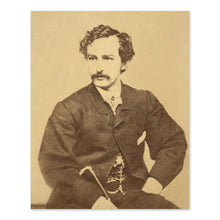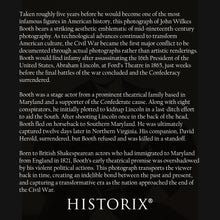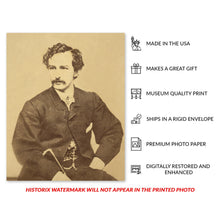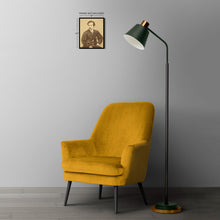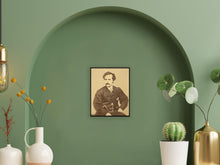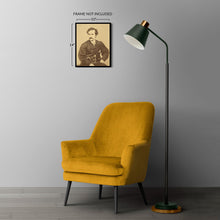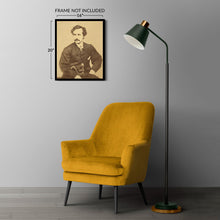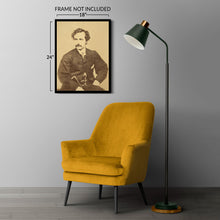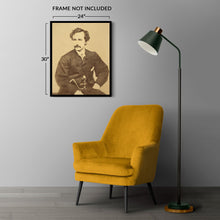
Feature Points
- HISTORIC PHOTO REPRODUCTION: You'll love this high quality historic reproduction of 1860 John Wilkes Booth Photo Print. Our museum quality prints are archival grade, which means it will look great and last without fading for over 100 years. Our print to order photos are made in the USA and each print is inspected for quality. This historic photo is a perfect addition to your themed decor. Vintage photos look great in the home, study or office. They make a perfect gift as well.
- MUSEUM QUALITY: This high quality photo print will be a great addition to your vintage-themed wall. Don't waste money on cheap-looking, thin paper photos. We use high-end printing equipment with professional quality photo paper and ink. Our professional's choice semi-gloss paper displays images beautifully.
- A LOOK BACK AT HISTORY: This is an impressive, historic reproduction of 1860 Photo of John Wilkes Booth Poster. A true piece of history. See our product description section for more fascinating information about this historic photo and its significance.
- READY TO FRAME: This unframed print includes a 0.2 inch border for a perfect frame fit and look. Our photos are designed to fit easy-to-find standard frame sizes, saving you money from having to pay for a custom frame. Each photo is inspected for quality and shipped in a rigid envelope/tube. The Historic Prints logo watermark will not appear in the printed photo.
- HISTORIX: We love history and art. Sometimes old photos have tears, separations and other blemishes. We digitally restore and enhance photos while keeping its historical character. All our photos are proudly made in the USA. Looking for a specific photo size? Please contact us. Customers all over the world love our vintage photos and we know you will too.
Additional Information
Taken roughly five years before he would become one of the most infamous figures in American history, this photograph of John Wilkes Booth bears a striking aesthetic emblematic of mid-nineteenth-century photography. As technological advances continued to transform American culture, the Civil War became the first major conflict to be documented through actual photographs rather than artistic renderings. Booth would find infamy after assassinating the 16th President of the United States, Abraham Lincoln, at Ford's Theatre in 1865, just weeks before the final battles of the war concluded and the Confederacy surrendered.
Booth was a stage actor from a prominent theatrical family based in Maryland and a supporter of the Confederate cause. Along with eight conspirators, he initially plotted to kidnap Lincoln in a last-ditch effort to aid the South. After shooting Lincoln once in the back of the head, Booth fled on horseback to Southern Maryland. He was ultimately captured twelve days later in Northern Virginia. His companion, David Herold, surrendered, but Booth refused and was killed in a standoff.
Born to British Shakespearean actors who had immigrated to Maryland from England in 1821, Booth's early theatrical promise was overshadowed by his violent political actions. This photograph transports the viewer back in time, creating an indelible bond between the past and present, and capturing a transformative era as the nation approached the end of the Civil War.










